
What is Japanese Sake?
Sake is a traditional Japanese beverage made from rice, koji (rice malt), and water, typically containing 15 to 16% alcohol. It is brewed through a meticulous process that converts rice starch to sugar and alcohol. Numerous factors like rice strain and rice polishing ratio can yield diverse results, with flavours ranging from light and citrusy to bold and rich.
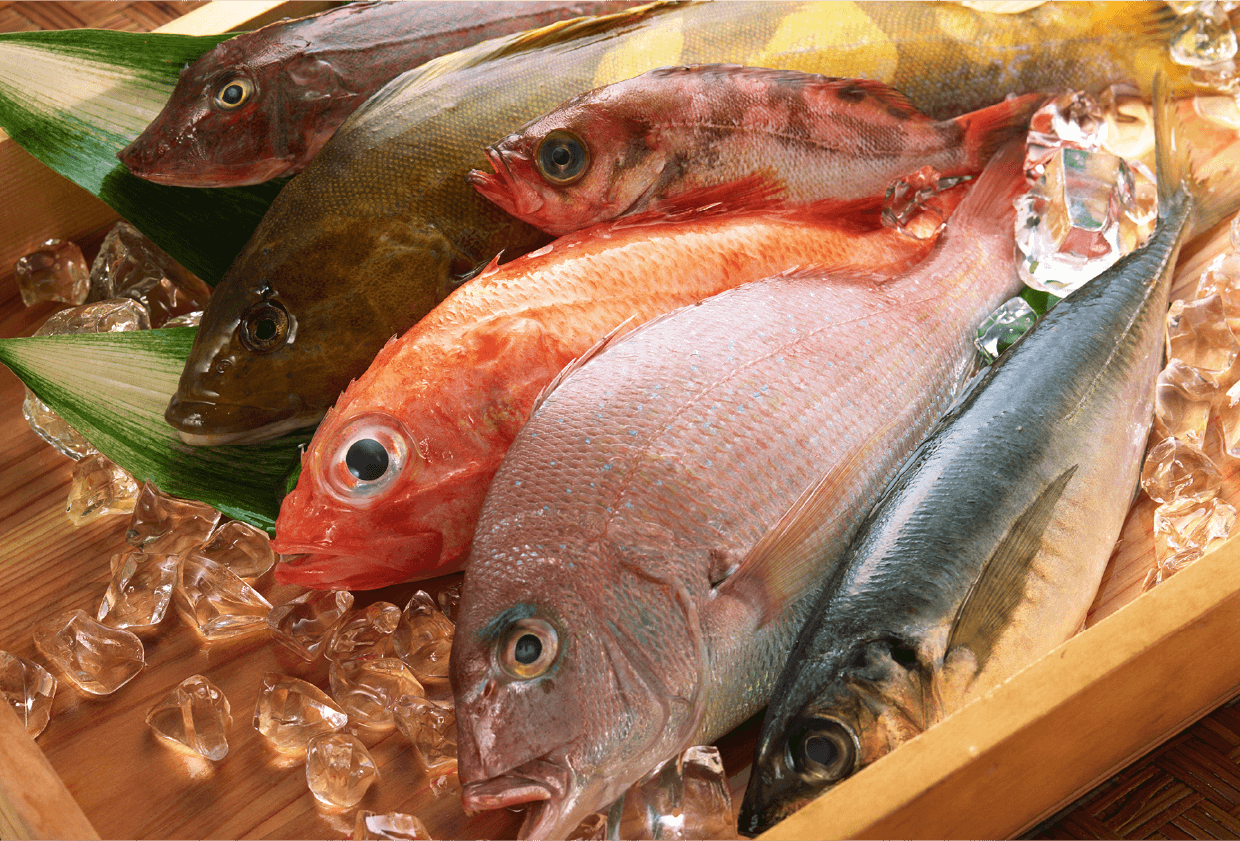
The Synergy of Sake & Seafood
“Synchronisation” is what happens when similar aromas and tastes in food and alcoholic beverages blend seamlessly together to heighten the tasting experience. So when sake’s glutamic acid and seafood’s inosinic acid combine to create a synergy of umami, the result is a new dimension of outstanding flavour.
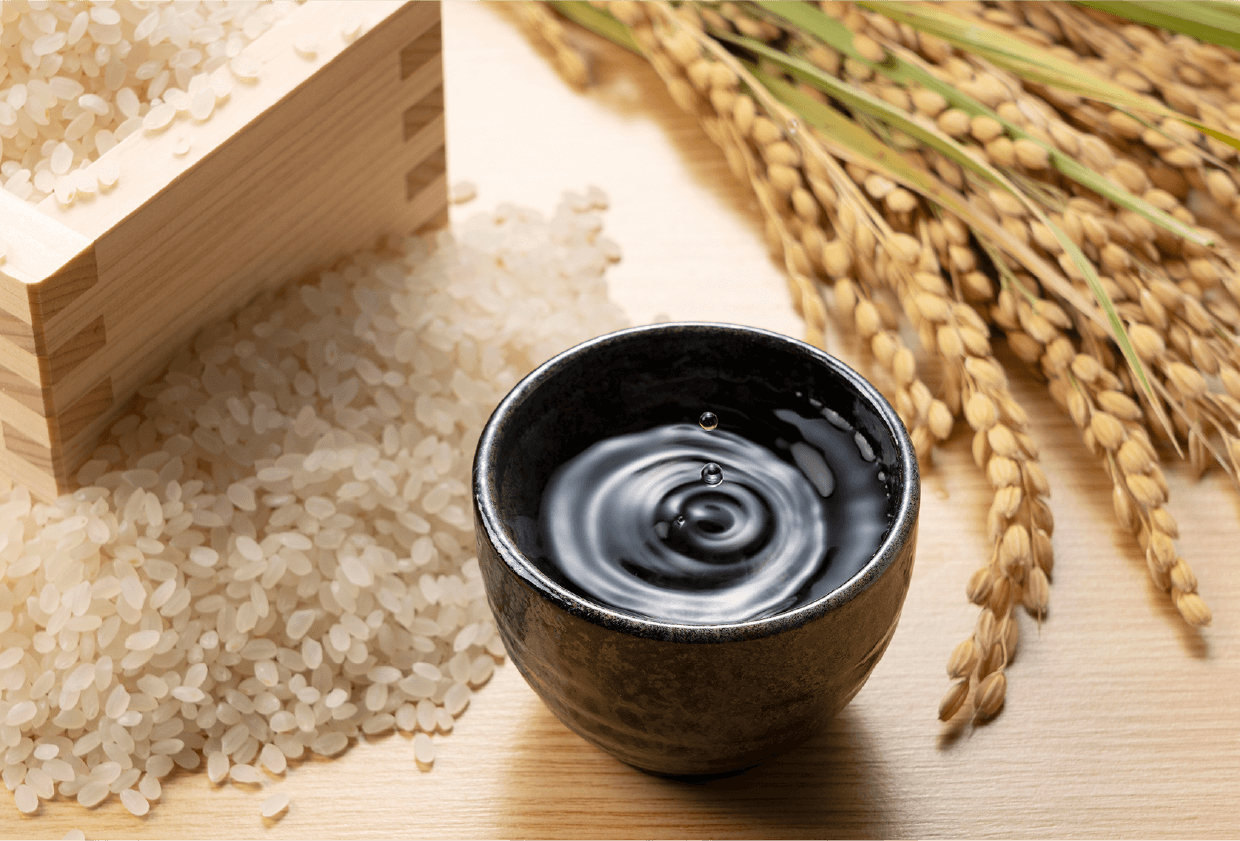
The “Supplemental Effect”
The “supplemental effect” refers to how alcoholic beverages can mask the unpleasant odour of seafood when they are enjoyed together. As the freshness of fish deteriorates, trimethylamine is released, resulting in the undesirable scent. However, sake’s fragrance components effectively neutralises this odour, allowing only delicious flavours to come through.

Sake vs. White Wine
White wine is traditionally believed to pair well with seafood, but the ferrous iron contained in white wine actually intensifies seafood’s unpleasant odour. In contrast, sake contains hardly any iron and thus avoids any negative effects when paired with seafood. Instead, its rich aromas and umami enhance the delightful sweetness of seafood.
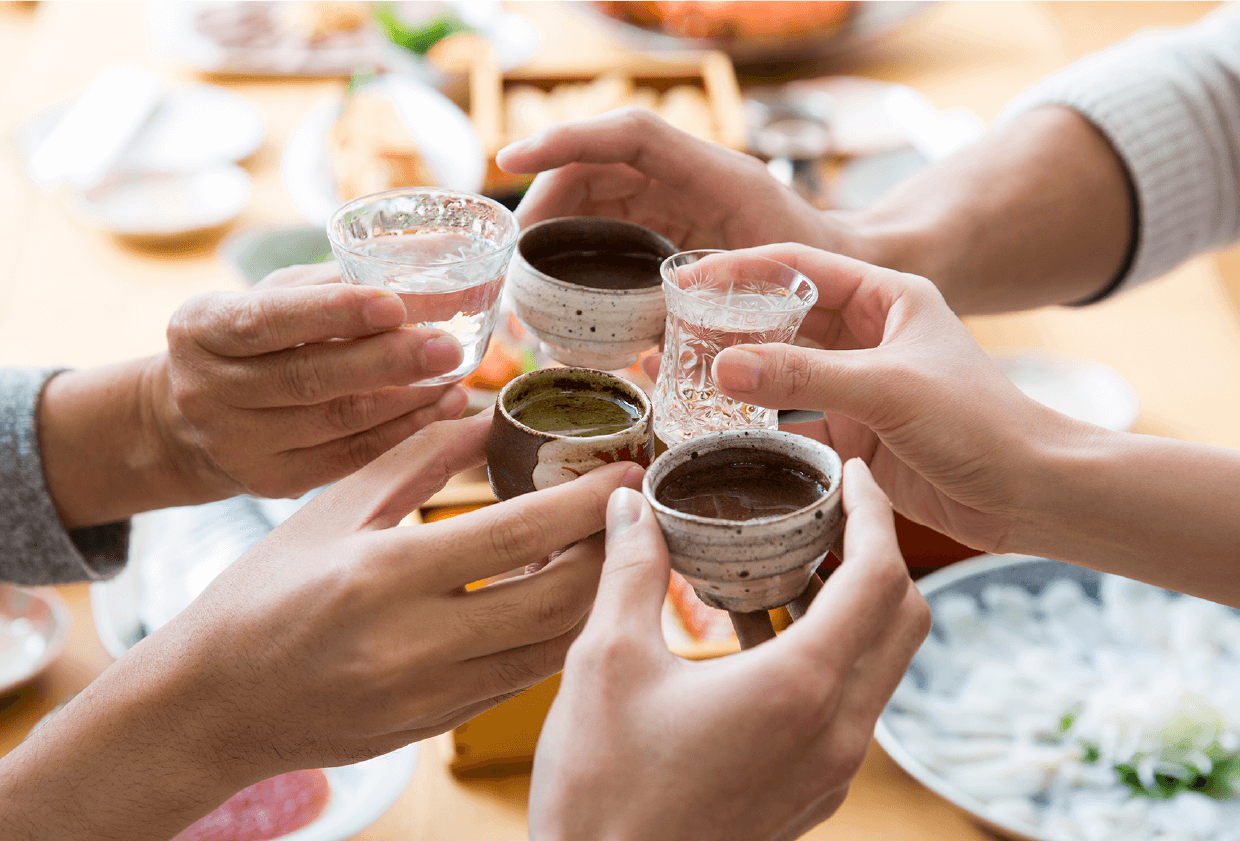
Enjoy Sake with Meals
Alcohol falls into two categories: “distilled liquor” and “fermented liquor”. The latter includes beverages like wine, beer, and sake, and their tastes and aromas increase the umami of foods while masking the unpleasant odours of fish. As such, sake is a wonderful meal companion, and a survey in Japan revealed that approximately 70% of people in Japan enjoy sake as their primary alcoholic beverage during meals.
Grades of Sake
| Rice Polishing Percentage | Alcohol-Added Style(Rice, Water, Yeast, Koji/Distilled Alcohol) | Pure Rice Style(Rice, Water, Yeast, Koji) |
|---|---|---|
| 50% or Less Remaining | Daiginjo | Junmai Daiginjo |
| 60% or Less Remaining | Ginjo | Junmai Ginjo |
| 70% or Less Remaining | Honjozo | Junmai |
| No Minimum Polishing Requirement | Futsu-shu |
How to Taste Sake
STEP 1
Visual
Observe the colour and clarity to set the stage for your tasting journey
STEP 2
Smell
Swirl the sake gently and inhale deeply to identify the diverse scents
STEP 3
Taste
Savour the nuanced flavours, experience the intensity, explore the texture, relish the umami, and appreciate the lingering finish
STEP 4
Think
Consider the balance of flavours and how they harmonise on your palate. Does this exemplify the desired standard?
How to Read Sake Labels
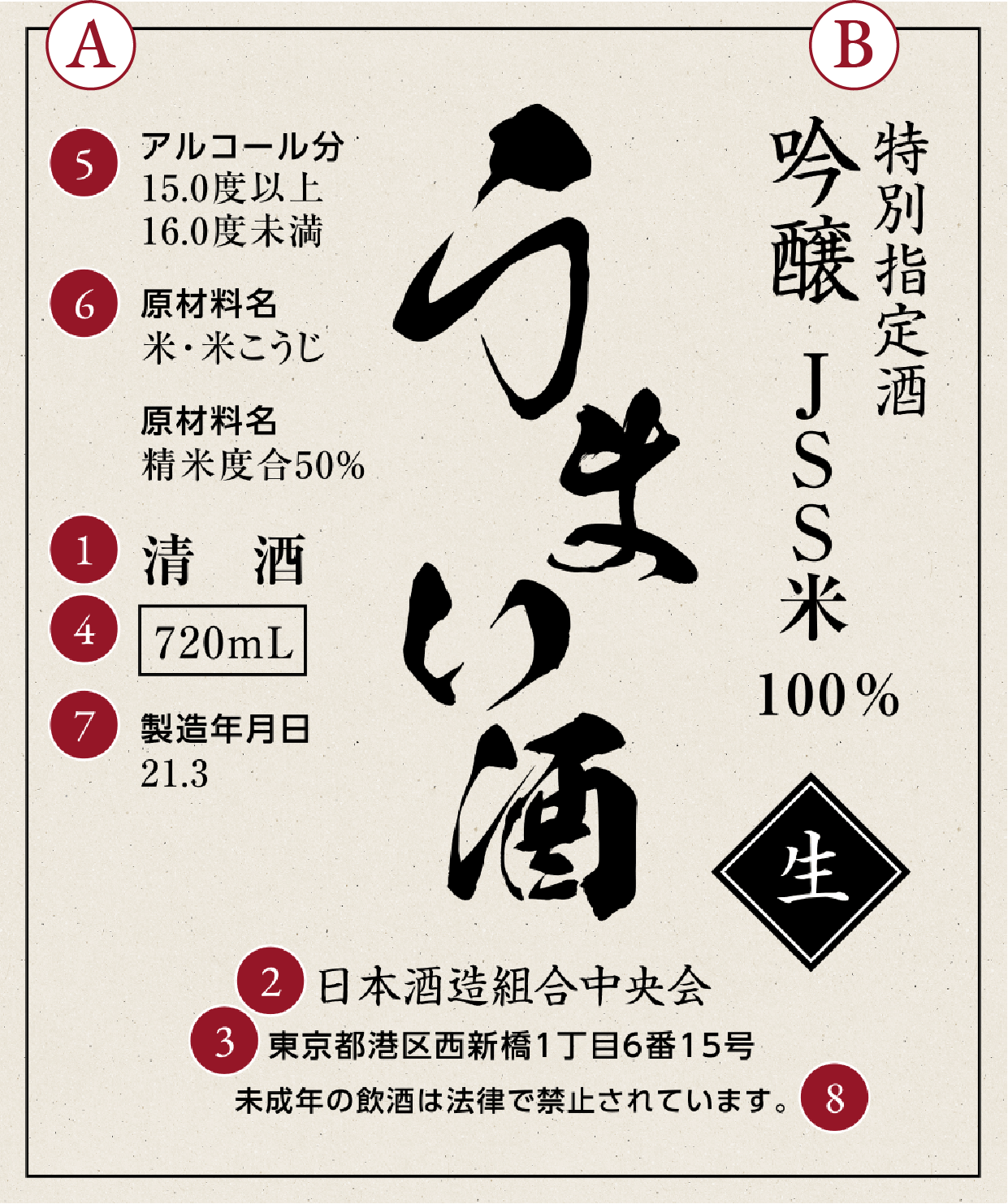
A: Legally Required Information
on Sake Bottle Labels in Japan
1 : Product NameSake is referred to as both 清酒 (seishu) and 日本酒 (nihonshu)
2 : Producer’s Name
3 : Producer’s Address
4 : Net Content
5 : Alcohol ContentTypically ranging between 15-16%, with Genshu varieties around 20%
6 : IngredientsIngredients include rice and rice koji. Distilled alcohol is added to non-Junmai types
7 : Date of ProductionIndicates when the sake was bottled and dispatched from the brewery
8 : Legal Statement on Drinking
B: Specially Designated Sake
Stated if the Sake falls into Premium Sake Classification.
e.g. Daiginjo, Ginjo and Junmai.

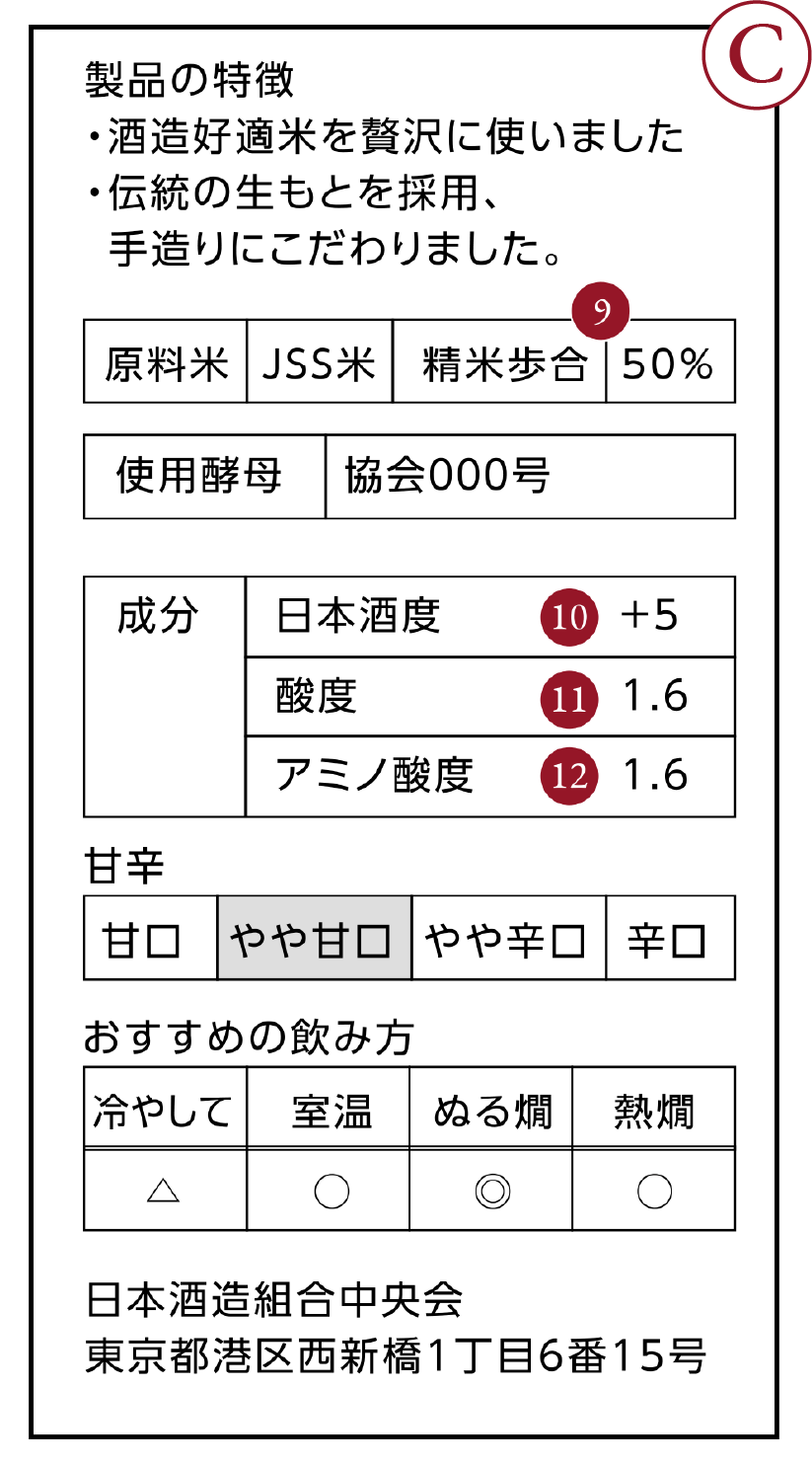
C: Optional Information (Back Label)
9: Rice Polishing RateThe percentage of the rice grain that remains after polishing
10: Sake Meter Value (SMV)Generally, a higher value indicates a drier sake, while a lower value suggests a sweeter sake
11: AcidityThe higher the acidity, the drier the sake becomes
12: Amino Acids Content
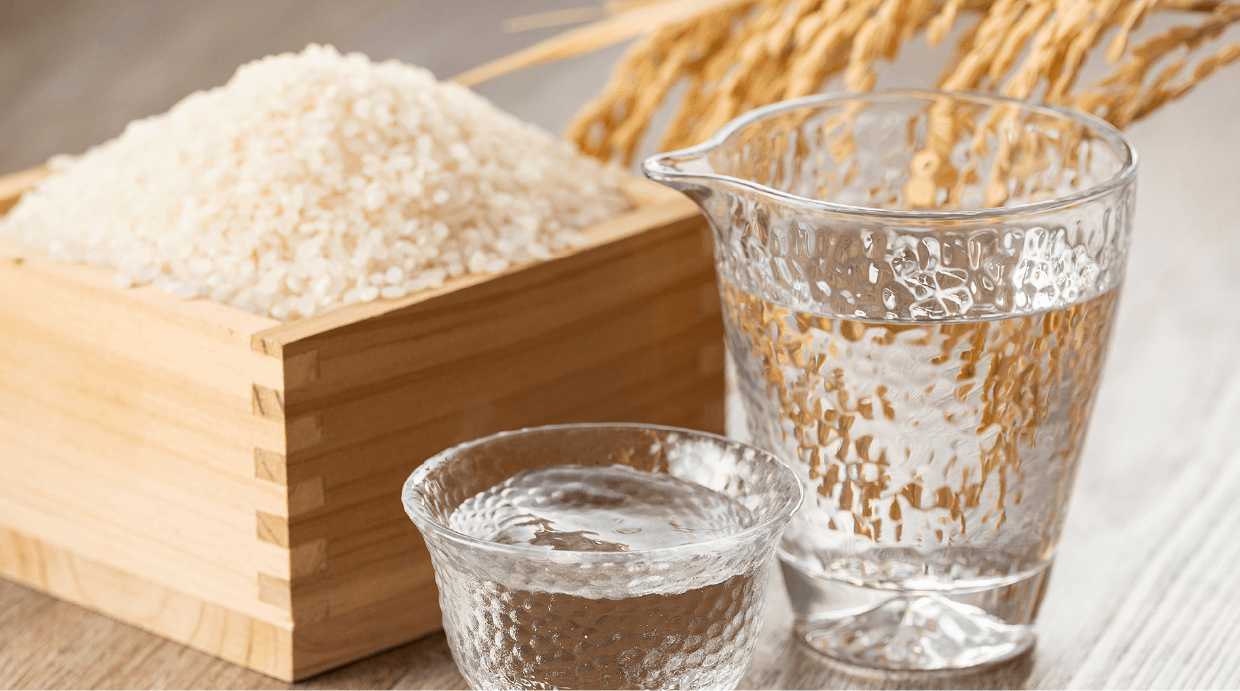
Worldwide Sake Boom
Since the 2010s, the world has experienced a remarkable surge in the popularity of Japanese cuisine, driven by the exceptional skills of renowned Japanese chefs. This culinary wave has brought sake to the forefront of global beverage trends, where the craft movement encourages people to drink less but savor more.
Explore the fascinating world of sake with us, uncovering its rich history, prestigious competitions, and the rise of overseas breweries. Discover how this traditional Japanese beverage is captivating palates worldwide. Join us in celebrating the artistry and culture of sake as it continues to gain international acclaim.
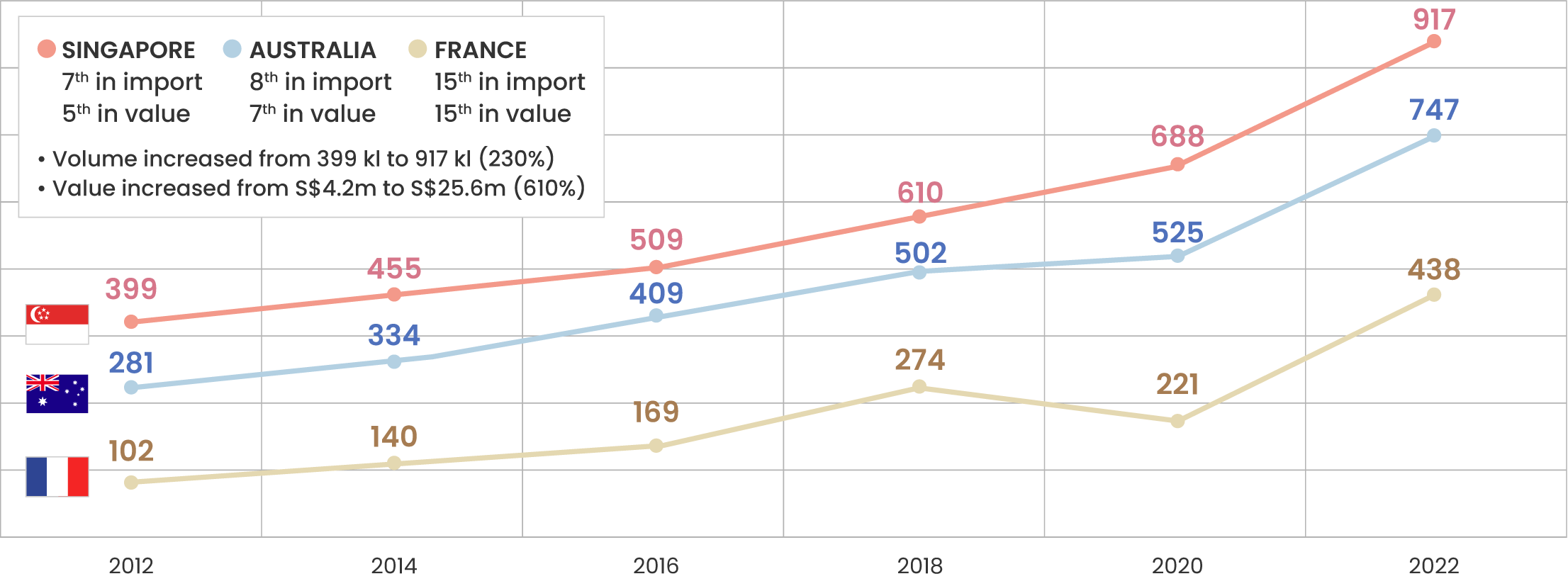
Sake vs. Wine: Key
Differences #1
Sake's umami content enhances the flavors of seafood, creating a synergistic taste experience.
Additionally, sake has less acidity, tannin, and astringency compared to wine, making it a smoother option for various pairings.

| Contents | Sake | Wine |
|---|---|---|
| Alcohol (%) | 13 - 17 | 10 - 13 |
| Residual Sugar (g/100ml) | 3 - 6 | 2 - 8 |
| Sugar (Glucose) (g/100ml) | 0.5 - 4.2 | 0.1 - 3 |
| Umami (Glutamic Acid) (mg/l) | 100 - 250 | 10 - 90 |
| Total Acidity (ml) | 1.1 - 2.4 | 7 - 13 |
| Succinic Acid (mg/l) | 200 - 500 | 500 - 1500 |
| Malic Acid (mg/l) | 100 - 400 | 250 - 5000 |
| Tartaric Acid (mg/l) | - | 1500 - 4000 |
| Sulphites (S02) (mg/l) | 0 | 250 |
Sake vs. Wine:
Key Differences #2
Sake effectively suppresses fishy odors and moderates the saltiness of dishes,
enhancing the overall dining experience.
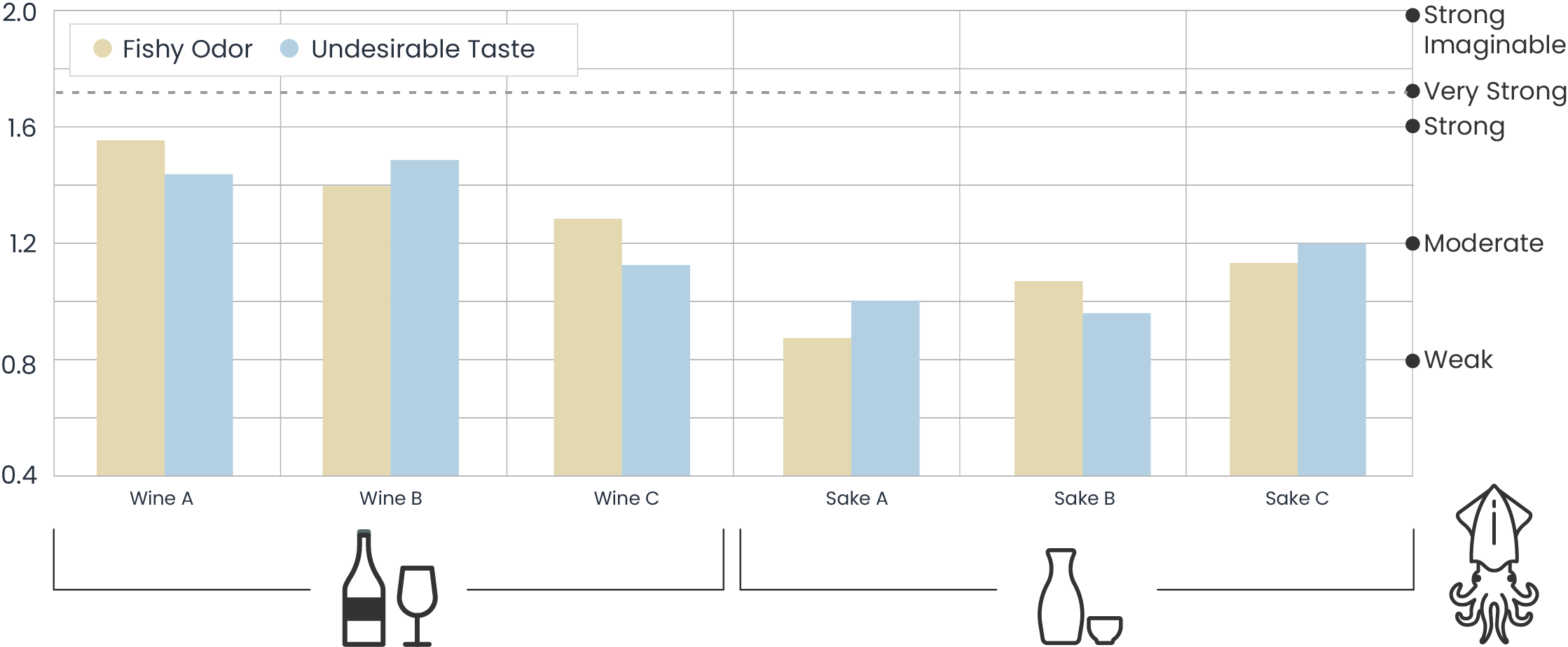
Sake vs. Wine:
Key Differences #3
The pairing of wine and seafood can sometimes result in unpleasant flavors due to certain chemical reactions.
Sake, however, does not have these issues, making it a more harmonious choice for seafood dishes.
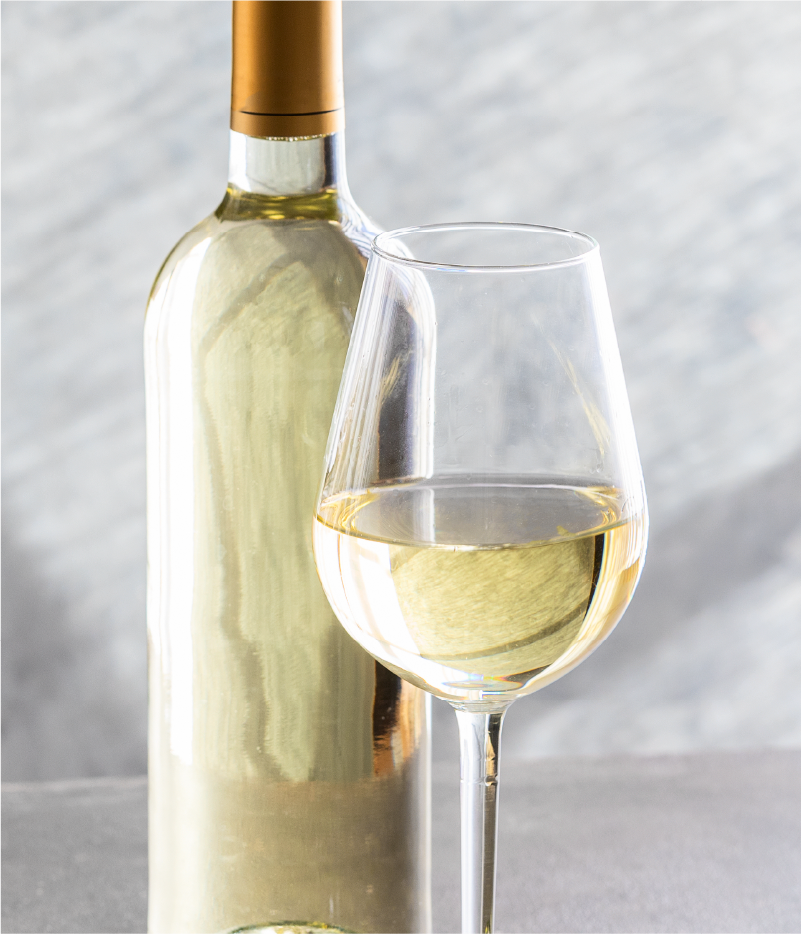
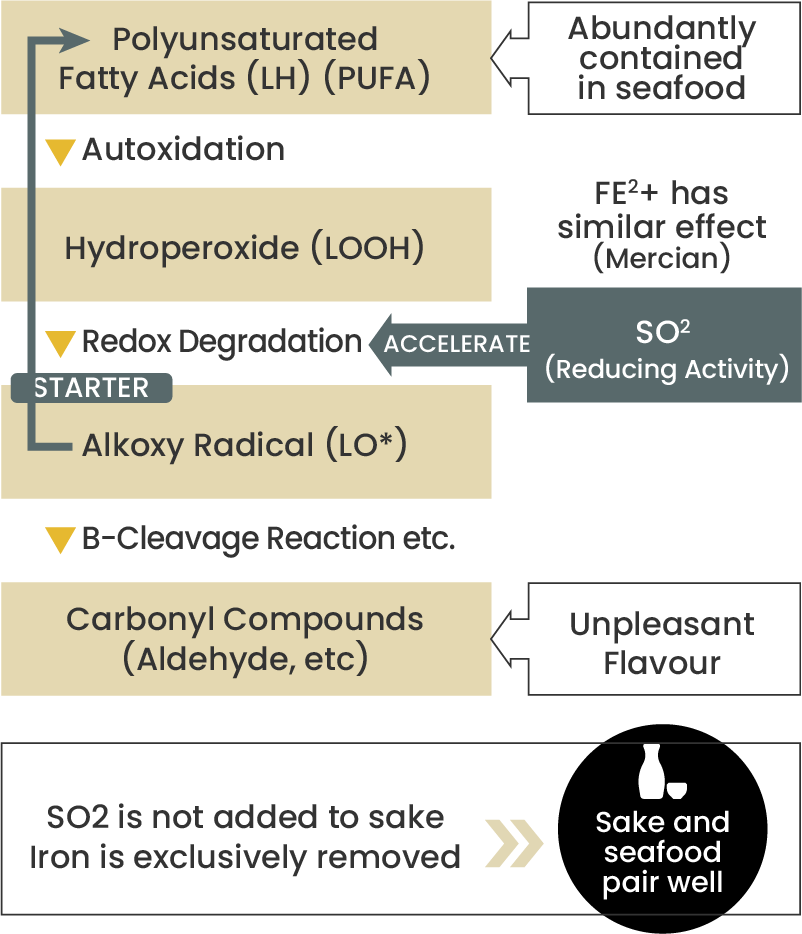
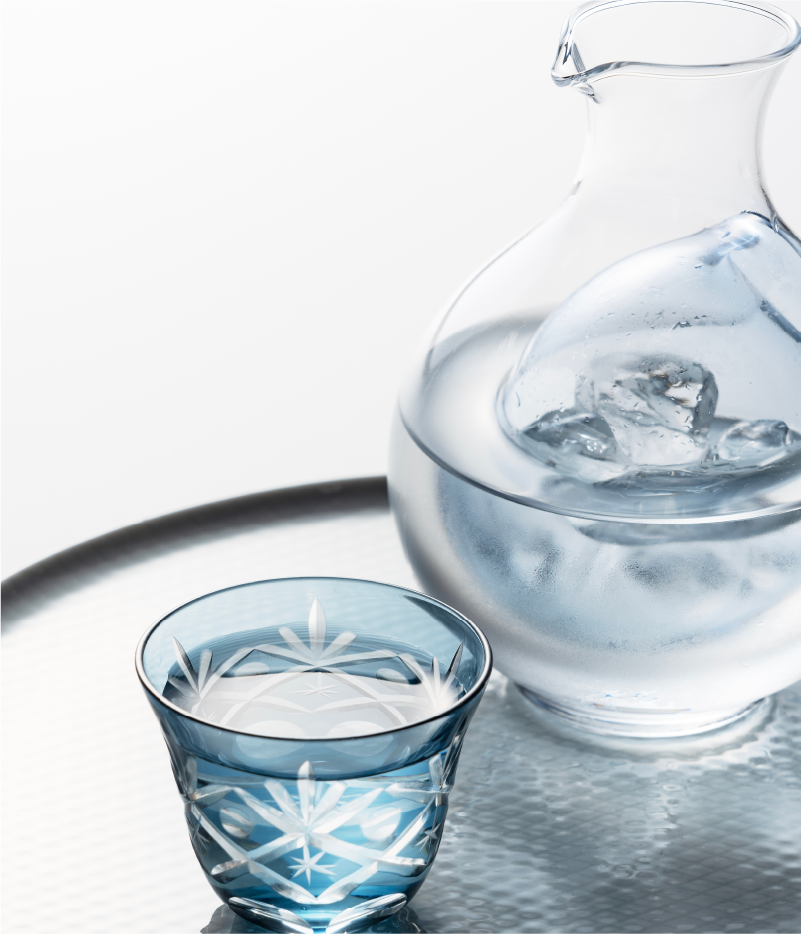
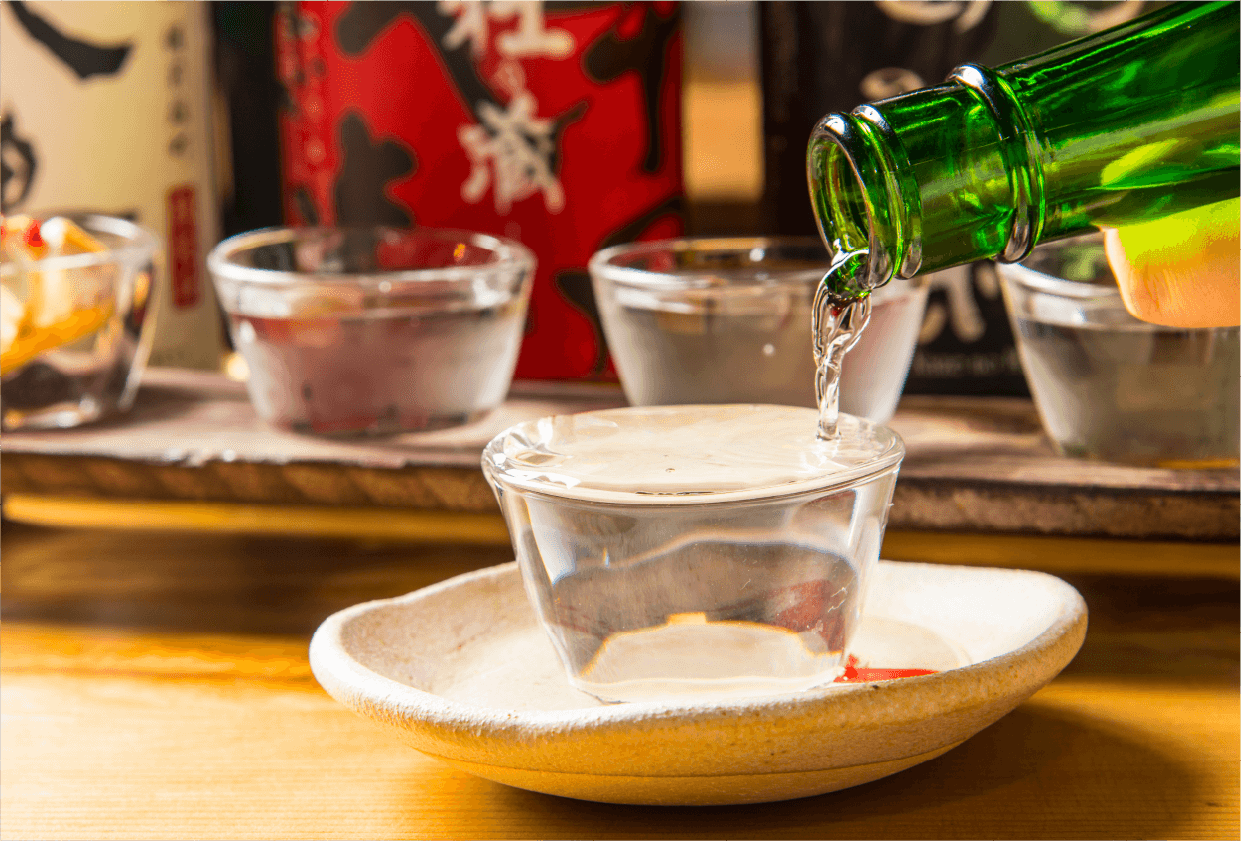
Sake Storage
To ensure the best quality, store sake in a cool environment, ideally below 5°C. Keep the bottle upright to prevent leakage and avoid exposing it to bright lights, which can affect its flavor. For optimal taste, enjoy sake while it is young—typically within one year of production, although this can vary depending on the type of sake.
Temperature
Chilled
- ・More refreshing
- ・Cleaner & leaner
- ・Less aroma & flavour if too cold
- ・Bitter stands out more

Warmed
- ・Activation of aroma particles
- ・Fuller and richer flavour
- ・Mellow texture & dryer taste
- ・Emphasizes alcohol & acidity
- ・Undermines complexity of aromas

Recommended Temperature


Sake Vessels
Sake vessels come in various materials, each influencing the flavor differently. Earthenware is thick and absorbs water, enhancing the sake's earthy tones. Porcelain, being smooth and non-absorbent, maintains the sake's original flavor. Glass is transparent and inert, providing a pure taste experience. Wood vessels impart unique flavors by absorbing water. Metal can alter the flavor profile, while plastic, silicone, and acrylic are lightweight and cost-effective options that do not affect the taste as much.
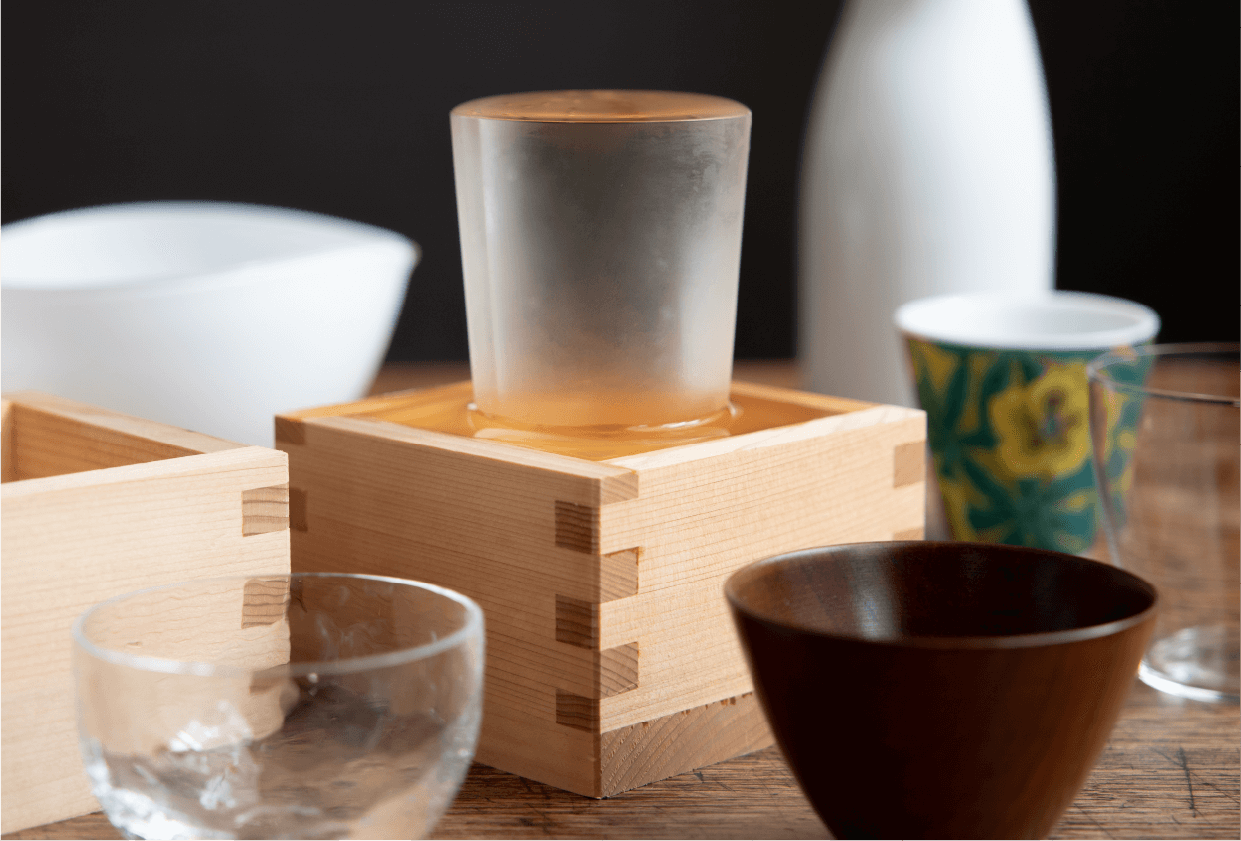
Virtual Kura Trip
A virtual Kura Trip for a more enriching experience of unlocking your palate!
Nanbu Bijin
Kagatobi
KIKUSUI
Shirayuki
TATENOKAWA
Gekkeikan
Akashi-tai
Kamoizumi
KUBOTA
MIZUBASHO


